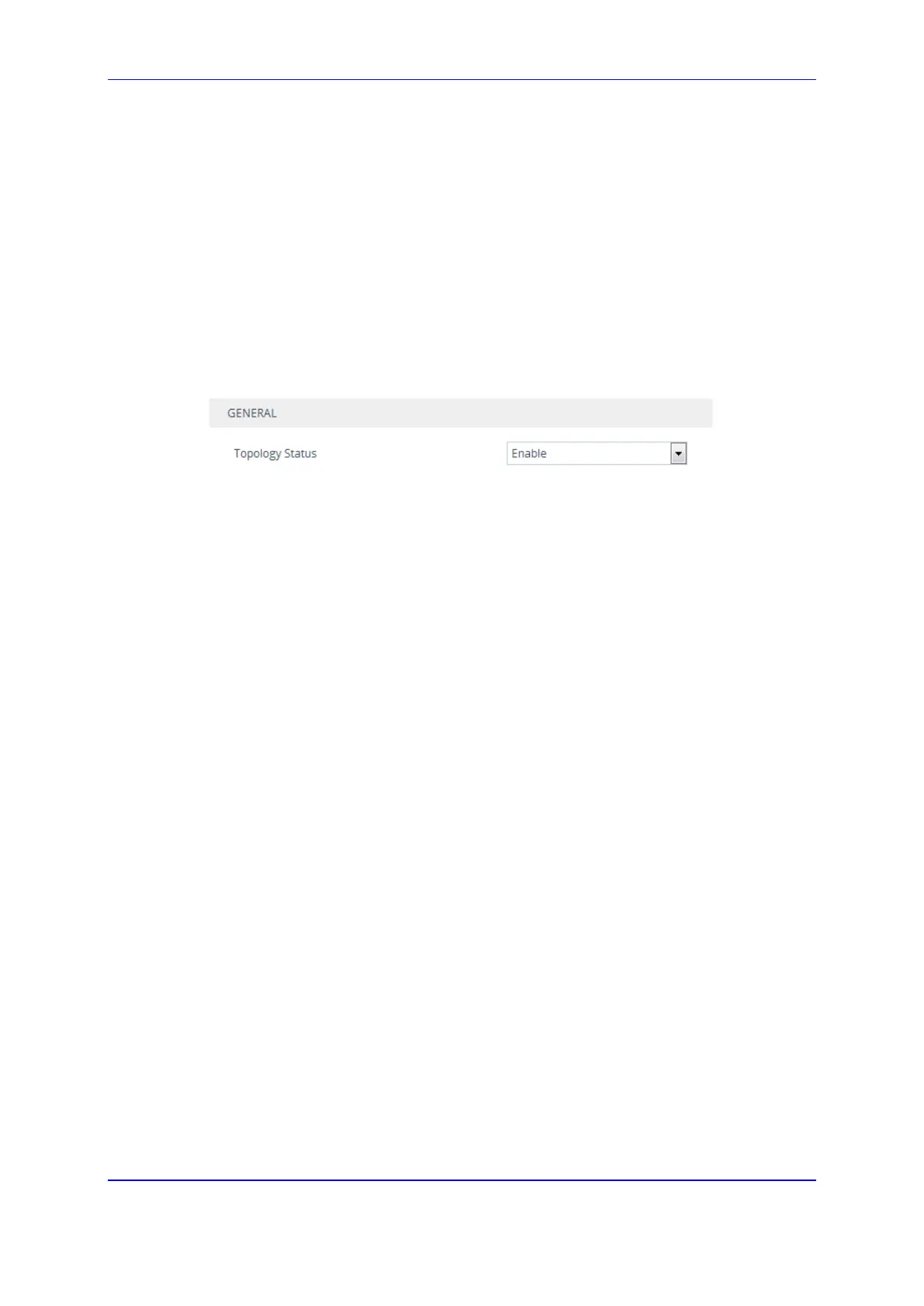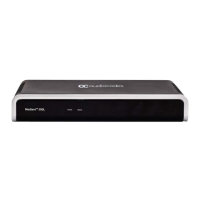Version 7.2 269 Mediant 1000B Gateway & E-SBC
User's Manual 15. Services
15.5.2 Enabling Topology Status Services
The following procedure describes how to enable Topology Status for Web-based services.
For more information on Topology Status services, see ''Configuring Remote Web
Services'' on page 262.
To enable Topology Status services:
1. Open the Web Service Settings page (Setup menu > IP Network tab > Web Services
folder > Web Service Settings).
2. From the 'Topology Status' drop-down list (RoutingServerGroupStatus), select
Enable:
Figure 15-42: Enabling Topology Status Web-based Service
3. Click Apply.
15.5.3 Centralized Third-Party Routing Server
You can employ a remote, third-party Routing server to handle call routing decisions in
deployments consisting of multiple AudioCodes devices. The Routing server can be used
to handle SBC, Tel-to-IP, and IP-to-Tel calls. Employing a Routing server replaces the
need for the device's routing tables (IP-to-IP Routing table for SBC calls, and Tel-to-IP
Routing table and IP-to-Tel Routing table for Tel-to-IP and IP-to-Tel calls respectively) to
determine call destination.
For SBC calls: When the device receives an incoming call (SIP INVITE, NOTIFY or
MESSAGE), it searches the IP-to-IP Routing table for a matching routing rule that is also
configured to use a Routing server. If found, the device requests the Routing server for an
appropriate destination. For Gateway calls: When the device receives an incoming call
(SIP INVITE, NOTIFY or MESSAGE), it disregards the routing tables and instead
immediately requests the Routing server for an appropriate destination. The request is sent
to the Routing server using an HTTP Get Route message. The request contains
information about the call (SIP message and for IP-to-Tel calls, the source IP Group based
on the associated Proxy Set).
The Routing server uses its own algorithms and logic in determining the best route path.
The Routing server manages the call route between devices in "hops", which may be
spread over different geographical locations. The destination to each hop (device) can be
by IP address (with port),IP Group or Trunk Group. . If the destination is an IP address,
even though the destination type (in the IP-to-IP Routing table) is an IP Group, the device
only uses the IP Group for profiling (i.e., associated IP Profile etc.). If multiple devices exist
in the call routing path, the Routing server sends the IP address only to the last device
("node") in the path.
Once the device receives the resultant destination hop from the Routing server, it sends
the call to that destination. The Routing server can provide the device with an appropriate
route or reject the call. However, if for the initial request (first sent Get Route request for
the call) the Routing server cannot find an appropriate route for the call or it does not
respond, for example, due to connectivity loss (i.e., the Routing server sends an HTTP 404
"Not Found" message), the device routes the call using its routing tables. If the Get Route
request is not the first one sent for the call (e.g., in call forwarding or alternative routing)
and the Routing server responds with an HTTP 404 "Not Found" message, the device
rejects the call.

